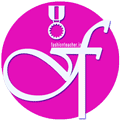Doublet Jacket
A doublet is a man's snug-fitting buttoned jacket that is shaped and fitted to the man's body which was worn in Western Europe from the late Middle Ages through to the mid-17th century. The doublet was hip length or waist length and worn over the shirt or drawers. Until the end of the 15th century the doublet was worn under another layer of clothing such as a gown, mantle, or overtunic. The term also refers to a formal jacket worn with highland dress, a variation of which is called an Argyll jacket or Prince Charlie jacket (or coatee).
Originally it was a mere stitched and quilted lining ("doubling"), worn under a hauberk or cuirass to prevent bruising and chafing. Doublets were frequently opened to the waistline in a deep V. The edges might be left free or laced across the shirt front. If there was space left it might be filled with a stomacher. By the 1520s, the edges of the doublet met at the center front. Then, like many other originally practical items in the history of men's wear, from the late 15th century onward it became elaborated enough to be seen on its own. A similar jacket, the sherwani, is worn today in India.
Throughout the 300 years of its use, the doublet served the same purpose: to give fashionable shape and padding to the body, to support the hose by providing ties, and to provide warmth to the body. The only thing that changed about the doublet over its history was its style and cut.
History
The doublet developed from the padded garments worn under armour, such as the gambeson, aketon, arming doublet.
Doublets of the 14th and 15th centuries were generally hip-length, sometimes, shorter, worn over the shirt and hose, with a houppelande or other form of overgown.
 From the late 14th century, doublets were cut and padded to give the wearer an egg-shaped or pigeon-breasted silhouette, a fashion that gradually died out in favor of a flatter natural fit.
From the late 14th century, doublets were cut and padded to give the wearer an egg-shaped or pigeon-breasted silhouette, a fashion that gradually died out in favor of a flatter natural fit.
Through the Tudor period, fashionable doublets remained close-fitting with tight sleeves, but acquired long skirts and elaborate surface decoration such as pinks (patterns of small cuts in the fabric), slashes, embroidery, and applied braid.
In the early Elizabethan period, doublets were padded over the belly with bombast in a "pouter pigeon" or "peascod" silhouette. Sleeve attachments at the shoulder were disguised by decorative wings, tabs, or piccadills, and short skirt-like peplums or piccadills covered the waist of the hose or breeches. Padding gradually fell out of fashion again, and the doublet became close-fitting with a deep V-waistline.








